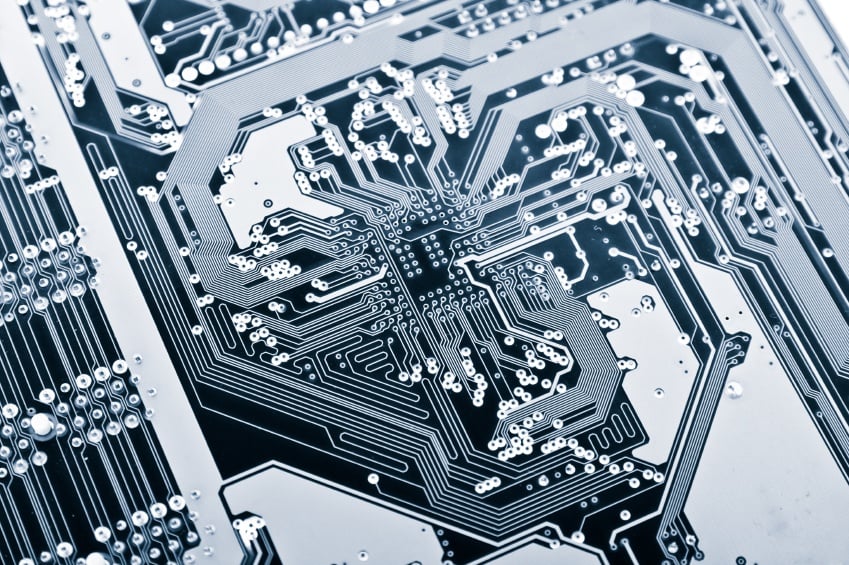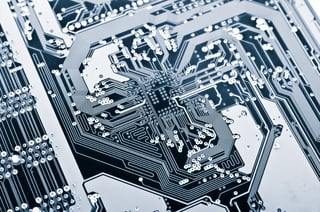06.07.2015
PCB Surface Finishes Comparison: HASL, OSP, & ENIG


A PCB surface finish is a coating between a component and a bare board PCB. It is applied for two basic reasons: to ensure solderability, and to protect exposed copper circuitry. As there are many types of surface finishes, selecting the right one is no easy task, especially as surface mounts have become more complex and regulations such as RoHS and WEEE have changed industry standards.
Criteria
Consider the following:
- Lead vs. Lead free*
- Component Type*
- Cost *
- Reworkability
- Productivity
- Environment
HASL and lead-free HASL
For decades HASL was one of the most popular surface finish choices. Yet, in recent years, manufacturers have realized its limitations. While a surface finish may be low cost and robust, fundamental changes in the PCB industry—namely, the rise complex surface mount technology—have exposed its shortcomings. HASL leaves uneven surfaces and is not suitable for fine pitch components. Although it does come in lead-free, there are other lead-free options which will likely make more sense for a high-reliability product.
Pros:
- Low-cost
- Available
- Repairable
Cons:
- Uneven Surfaces
- Not good for fine pitch components
- Thermal Shock
- Not good for plated through-hole (PTH)
- Poor wetting
OSP (Organic Solderability Preservative)
OSP is a water-based, organic surface finish that is typically used for copper pads. It selectively bonds to copper and protects the copper pad before soldering. OSP is environmentally friendly, provides a coplanar surface, is lead-free, and requires low equipment maintenance. However, it’s not as robust as HASL and can be sensitive while handling.
Pros:
- Lead-free
- Flat surface
- Simple process
- Repairable
Cons:
- Not good for PTH
- Sensitive
- Short Shelf life
Immersion Tin
Immersion Tin (ISn) is a good surface finish for planar, fine pitch products and is popular with press fit and backplanes. But for the most part, ISn has more pros than cons. While it works well to protect underlying copper from oxidation, it's intermetallic relationship with copper can be problematic. The diffusion of one metal into the other can impact shelf life and the performance of the finish.
Pros:
- Lead-free
- High Reliability
- Planar
- Cost Effective
- Can subsitute for reflowed solder
Cons:
- Not good for PTH
- Contains Thiourea, a known Carcingen
- Limited rework
- Tin wiskering
- Could damage soldermask
- Handling concerns
Immersion Silver
This is a surface finish whose benefits far outweight its costs. It gained widespread popularity since the RoHS and WEEE directive took effect, and can be a good alternative to ENIG for fine pitch and flat pack coating. It's a stable finish with a moderate shelf-life (roughly 12 months) and relatively simple process control. Immersion silver contains OSP, which works to prevent tarnishing. But it can be sensitive to contaminants, both in the air and on the board, and should be packaged as soon as possible. It is commonly used for membrane switches, EMI shielding, and aluminum wire bonding.
Pros:
- RoHS complaint
- Planar
- Fine pitch
- Cost effective
- Good alternative to ENIG
- High stability
Cons:
- Tarnishes
- Silver Whiskering
- Some systems cannot throw into microvias aspect ratios of > 1:1
- High friction coefficient/not suited for compliant-pin intertion (Ni-Au Pins)
Electroless Nickel Immersion (ENIG)
ENIG is quickly becoming the most popular surface finish in the industry. It’s a double layer metallic coating, with nickel acting as both a barrier to the copper and a surface to which components are soldered. A layer of gold protects the nickel during storage. ENIG is an answer to major industry trends such as lead-free requirements and rise of complex surface components (especially BGAs and flip chips), which require flat surfaces. But ENIG can be expensive, and at times can result in what is commonly known as “black pad syndrome,” a buildup of phosphorous between the gold and nickel layers that can result in fractured surfaces and faulty connections.
Pros:
- Flat surfaces
- Strong
- Lead-free
- Good for PTH
Cons:
- Black pad syndrome
- Expensive
- Not good for rework


